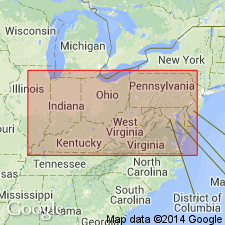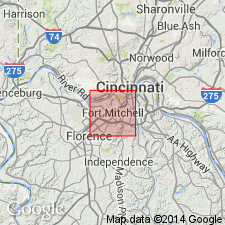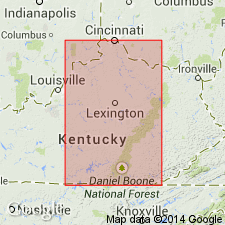
- Usage in publication:
-
- Bromley formation
- Modifications:
-
- Named
- Dominant lithology:
-
- Limestone
- Shale
- AAPG geologic province:
-
- Cincinnati arch
Summary:
Named for exposures near Bromley, KY, in the Ohio River Valley. Unit is "a series of drab to dark blue shales, outcropping along the Ohio River bank opposite Cincinnati. These shales are about 30 feet in thickness. Characteristic fossils are trilobite remains and a form of Dalmanella, both of which occur in relative abundance. Other fossils are rare." Underlying units not exposed; overlain by Point Pleasant formation.
Source: GNU records (USGS DDS-6; Reston GNULEX).

- Usage in publication:
-
- Bromley Shale Member*
- Modifications:
-
- Revised
- AAPG geologic province:
-
- Cincinnati arch
Summary:
Bromley Shale of Bassler (1906) reduced in rank to Bromley Shale Member of Point Pleasant Formation.
Source: GNU records (USGS DDS-6; Reston GNULEX).

- Usage in publication:
-
- Bromley Shale Bed*
- Modifications:
-
- Revised
- AAPG geologic province:
-
- Cincinnati arch
Summary:
Bromley Shale Member of Point Pleasant Formation reduced in rank to Bromley Shale Bed of Point Pleasant Tongue of Clays Ferry Formation.
Source: GNU records (USGS DDS-6; Reston GNULEX).
For more information, please contact Nancy Stamm, Geologic Names Committee Secretary.
Asterisk (*) indicates published by U.S. Geological Survey authors.
"No current usage" (†) implies that a name has been abandoned or has fallen into disuse. Former usage and, if known, replacement name given in parentheses ( ).
Slash (/) indicates name conflicts with nomenclatural guidelines (CSN, 1933; ACSN, 1961, 1970; NACSN, 1983, 2005, 2021). May be explained within brackets ([ ]).

